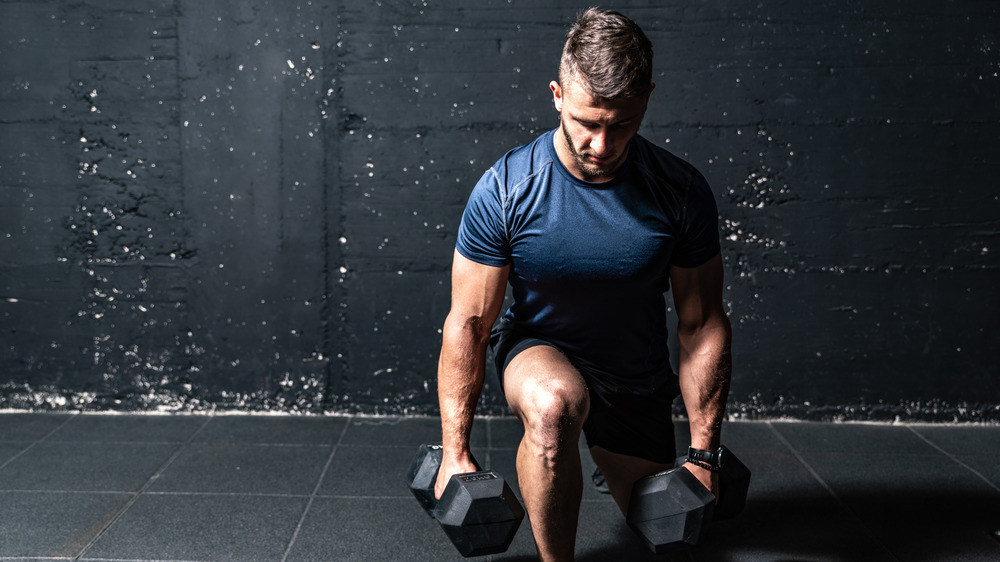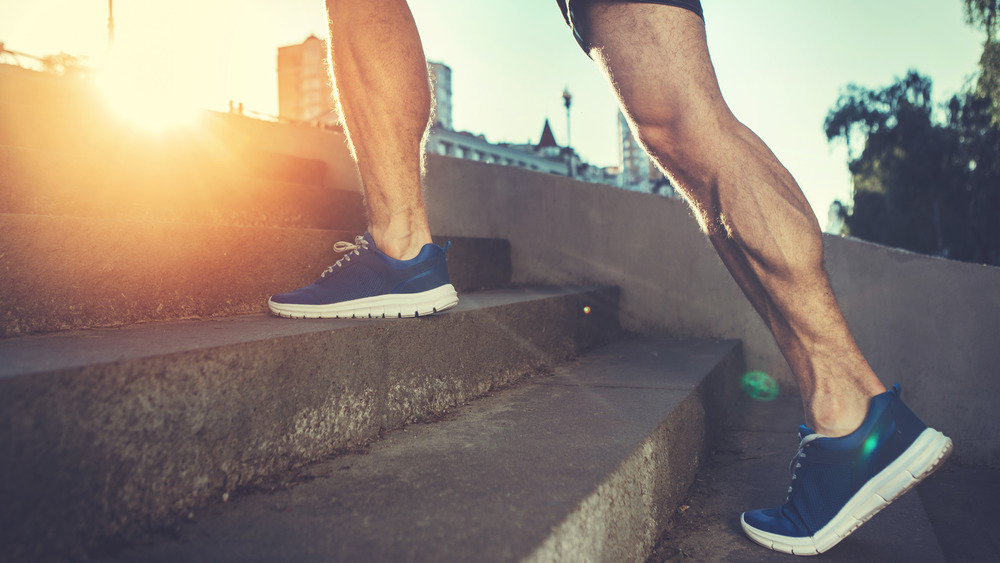What You Should Do If You Want Bigger Calves
A lot of us have a love-hate relationship with our legs. You might think they're too boney, too thick, loo long, too short, or maybe just the wrong shape. And a major part of the these critiques has to do with the calves. According to WebMD, your calves are made up of two muscles that can be found on the lower backs of your legs. The gastrocnemius is the larger calf muscle, and the soleus is smaller. A lot of people, men in particular, wish their calves were larger. Here's what to do if you share that wish.
Before we get to how to achieve bigger calves, it's important to know the factors that caused them to be the size they currently are. Healthline states that the size of your calves are decided by three things: your age, your genetics, and your body weight. So even though there are some active choices that can help bulk up the two muscles on your calves, your age or genetics cannot be adjusted.
Strength training or surgery could be the answer
Before you throw in the towel before even starting, genetics and age don't have to be the deciding factors. A lot of men (and some women) can be frustrated by the lack of results their strength training routines give to their calves' size, but the answer could be to intensively switch it up. Try training barefoot to increase range of motion. Increase your calf training in both length and intensity, and consider making calf raises a part of your bedtime routine, suggests Men's Health.
If all the strength training or weight gain in the world doesn't give your calves growth, then there is another option. Some have opted for cosmetic surgery to give their calves a noticeable bulge. According to Associates in Plastic Surgery, calf implants are growing in popularity and are part of a larger category referred to as "body building implants."
Despite any size issues you are having with your calves, they are doing their job by supporting the rest of your body and are crucial for movements, says Healthline. They can help you run, jump, and turn and are there to help stabilize the ankle. So whether you choose to increase you calve training routines, pack on some extra weight, or go the surgery route, we hope it doesn't stop you from appreciating their function.


